Sermon: Darnel & Wheat - Cross & Resurrection
Published by Ronald Steed,
GOOD & EVIL | REDEMPTION | GOD’S GOOD ROAD
St. Andrews Episcopal Church, Madison, CT ¹. Taken from Matthew 13:24–30, 36–43 (NRSV) ²
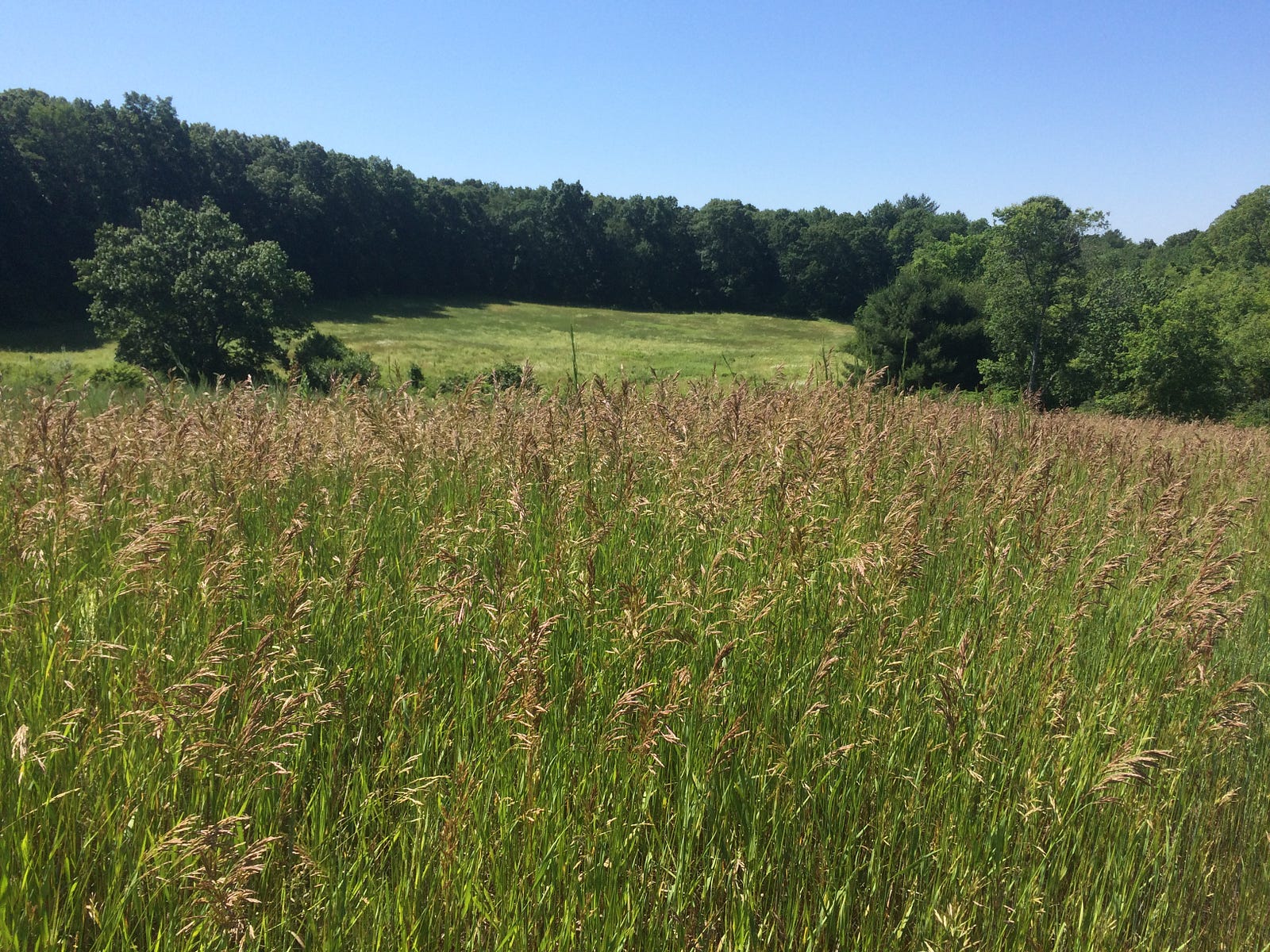
Summer Fields full of Rye Grasses | Photo by Ronald Steed at the CT Audubon Center, Pomfret CT.
Before you sit down, I want you to keep standing and take a moment to look around this space… turn to look at your neighbors behind you and across the aisle. Just look and take an inventory of who’s here.
Can you tell which of these people are good and which are evil? Can you tell the wheat from the weeds?
…
Darnel & Wheat
There are a few things that might be helpful to know about Jesus’ parable of the wheat and weeds for those of us who are not wheat farmers. The weeds, sown by an enemy in the wheat field, were probably darnel, a type of ryegrass that looks exactly like wheat while it is maturing, but whose seedheads are easily distinguishable from the seedheads of wheat. The householder and his staff would not have realized that someone had tampered with their field until the seedheads began to form. Only THEN would they have known.
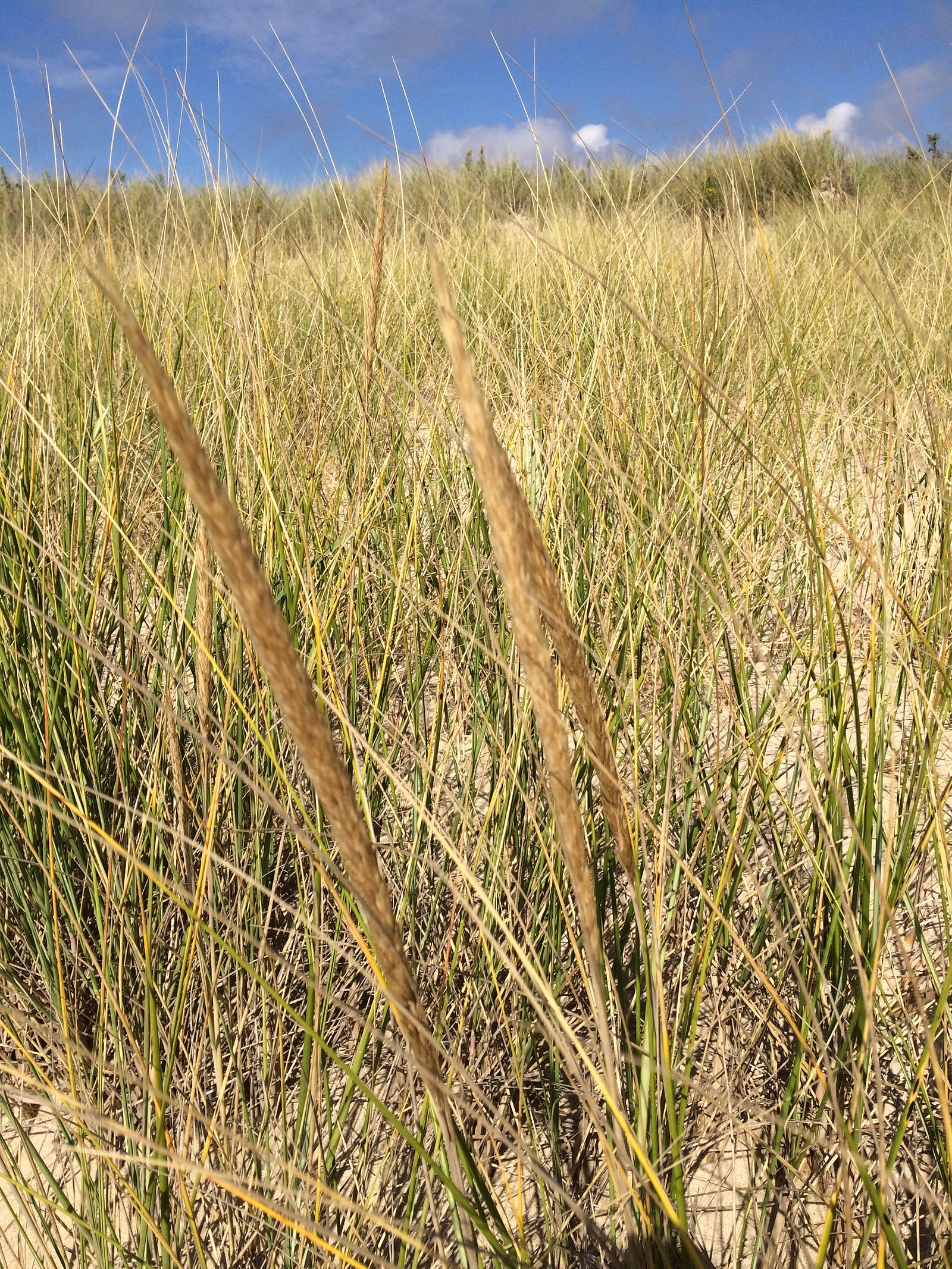
Seedheads among the sea grasses at Napatree Point Beach, Rhode Island | Photo by Ronald Steed
That’s why, by that time they realized that a lot of darnel had grown among the wheat, the roots of the wheat and the darnel would have become entangled in the soil, making the wheatfield more like a single living organism than a set of individual plants. To pull up the weedy darnel would have damaged the good wheat significantly, perhaps disastrously.
Darnel has been a problem for farmers since humanity first cultivated wheat, because the grain from darnel is dangerous. People who eat darnel grain in bread become drunk and ill or even die if enough is eaten. So it was a big deal historically. Modern machinery can sort out the seedheads so it is not a problem in western cultures any more, but there are still places in the world where there is a significant amount darnel grown among the wheat.
We know there was a Roman law that forbid someone from sowing darnel in another person’s wheat field as an act of revenge, so it’s clear that this happened enough between angry Roman farmers to warrant such a law, and that Jesus’ parable was realistic to the farmers of his day who heard his story. It’s a mean, petty, and dangerous thing to do. And it was a good stand-in story for what had happened to the world.
Armed with that farming knowledge, there are three things I want to say about this parable.
Can We Tell the Difference?
The first is, we are a lot less able to distinguish good from evil than we think we are. Remember that fruit that Adam and Eve ate? It came from the Tree of the Knowledge of Good and Evil, and it wasn’t a very large dose… apparently the knowledge effects were not passed down generationally either! There is no doubt that there is evil in the world that causes a lot of death and damage. You only need to look at the news to know that this is true. But it is hard to put a finger on exactly who the evil ones are. I don’t know about you when we were looking at one another, but I couldn’t tell the wheat from the darnel among us.
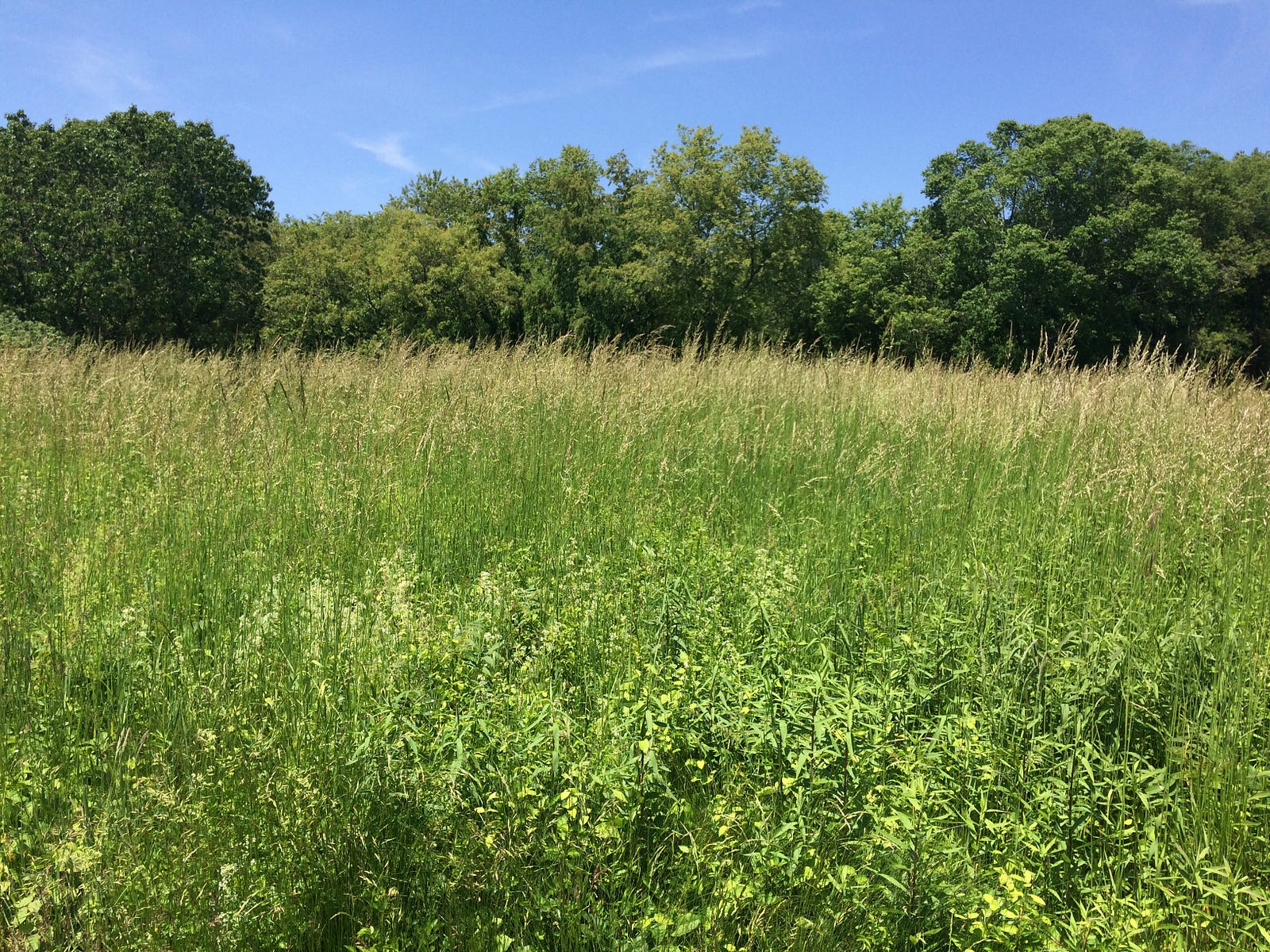
Tall grasses in the fields of Haley Farm State Park, Groton, CT | Photo by Ronald Steed
For the last month, I’ve been serving as a hospital chaplain at Lawerence & Memorial Hospital in New London, and I’ve seen a lot of patients and their families who are suffering with illnesses of all kinds. I sit with each of them and have a chat, and I can’t tell which are wheat and which are darnel. They all look like wheat to me and it seems like non-sense to think that any of them are weeds. Think about your own neighbors and co-workers… can you really tell the good ones from the evil ones?
On the HOME trip with our young people the week before, we talked to them before they hosted the community meal about people who experience homelessness. The idea was that our society is very quick to label people as winners and losers, and it judges people who experience homelessness as losers. We asked the students to consider that these are just neighbors who have had some misfortune, but who also have hearts, and gifts, and lives that are compelling and interesting, and stories that they are eager to share.
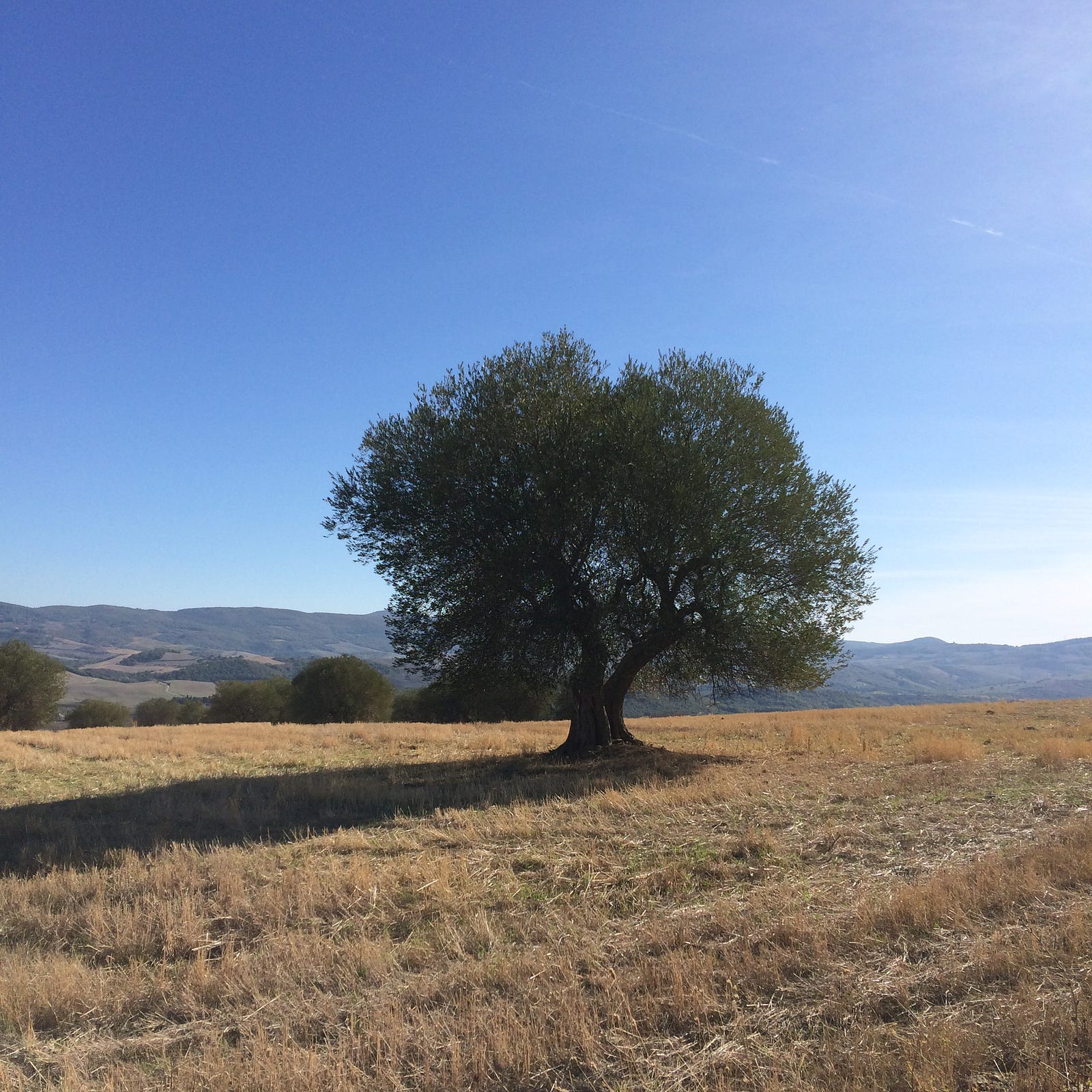
Wheat field stubble in Radicofni, Tuscany | Photo by Ronald Steed
The students took that idea and ran with it. The really engaged with the staff and the shelter guests during the community meal. I think they came away with the same idea that we just experienced here; you can’t really tell the difference between wheat and darnel when it comes to people, and the labels American society stamps on people are not all that reliable; in fact, those labels are wrong.
We Have a Common Life Together
The second thing I want to say is that, when Americans hear this parable, they think about individual wheat and darnel plants rather than the field as a whole. We live in a VERY individualistic society, even compared to other Western countries, and certainly across the sweep of history. So Americans are quick… a little too quick I think… to label people as good or evil; as winners or losers. Many Americans think that just knowing the political party of another person is enough to say everything they need to know about whether a person is good or evil.
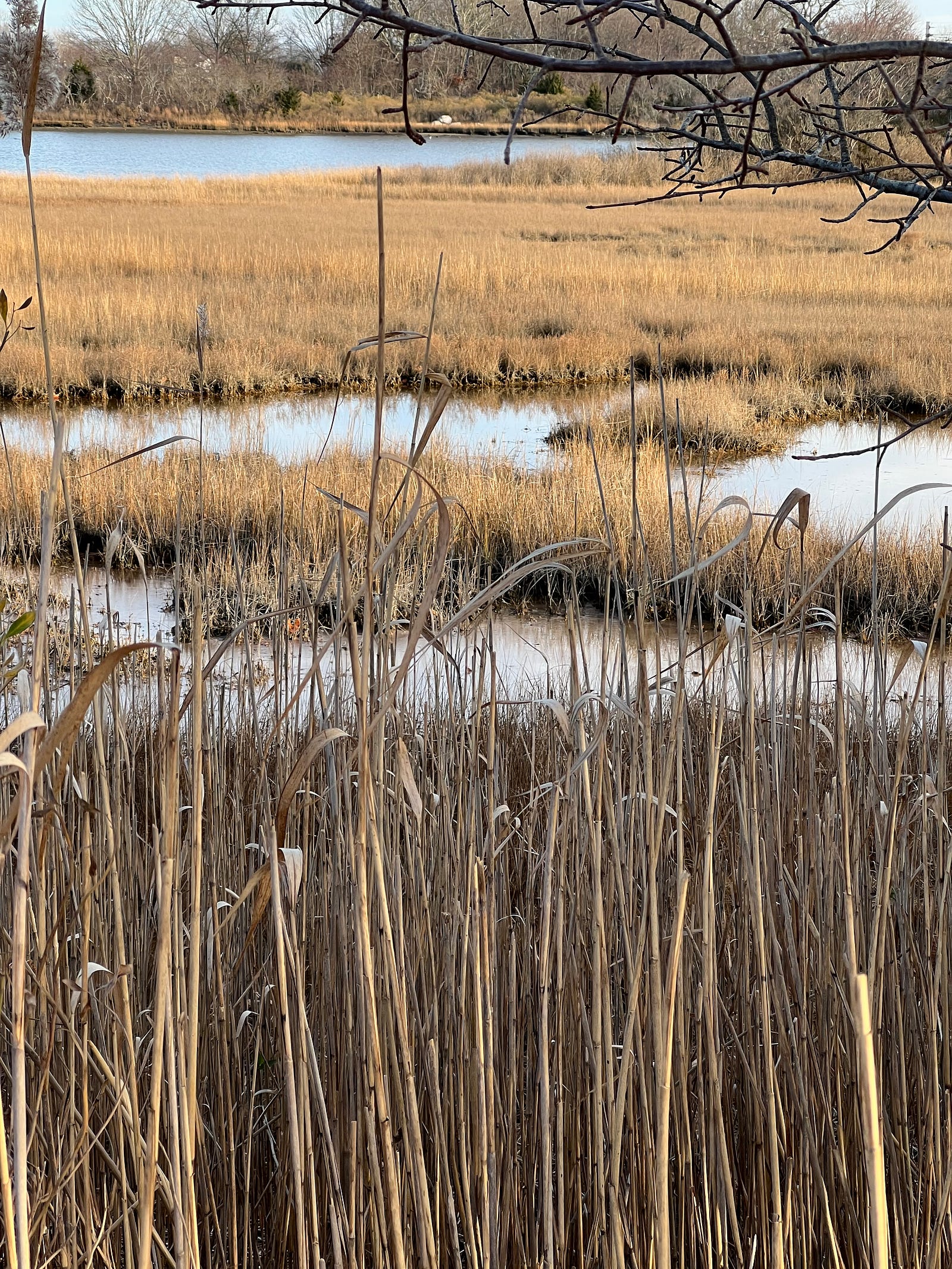
Salt marsh grasses in winter at Haley Farm State Park, Groton, CT | Photo by Ronald Steed
Americans really cannot imagine that people are as interconnected as a wheat field… we chafe at the idea that we even have a common life together where wheat AND darnel are intertwined and inseparable.
Americans cannot see what would have been obvious to farmer-listeners as Jesus told this parable in his day; that humanity is more like a single living organism and not just a collection of individuals.
And more… Americans cannot imagine that their own hearts are sown with both wheat and darnel. As one writer put it:
"If only there were evil people somewhere insidiously committing evil deeds, and it were necessary only to separate them from the rest of us and destroy them. But the line dividing good and evil cuts through the heart of every human being. And who is willing to destroy a piece of [their] own heart?" ³
Don’t Kill the Evil
The third thing I want to say about this parable is that Christianity has a unique way of dealing with evil that is very different from the way the world deals with it. Americans want to destroy evil… to root it out wherever it is found. We want to kill it and, we will go to war to do that. Of course, what Americans regard as evil differs across our society, most particularly between our political parties, and also along racial lines. But generally, Americans are willing to use violence to destroy whatever they regard as evil. In the American religion, violence is redemptive.
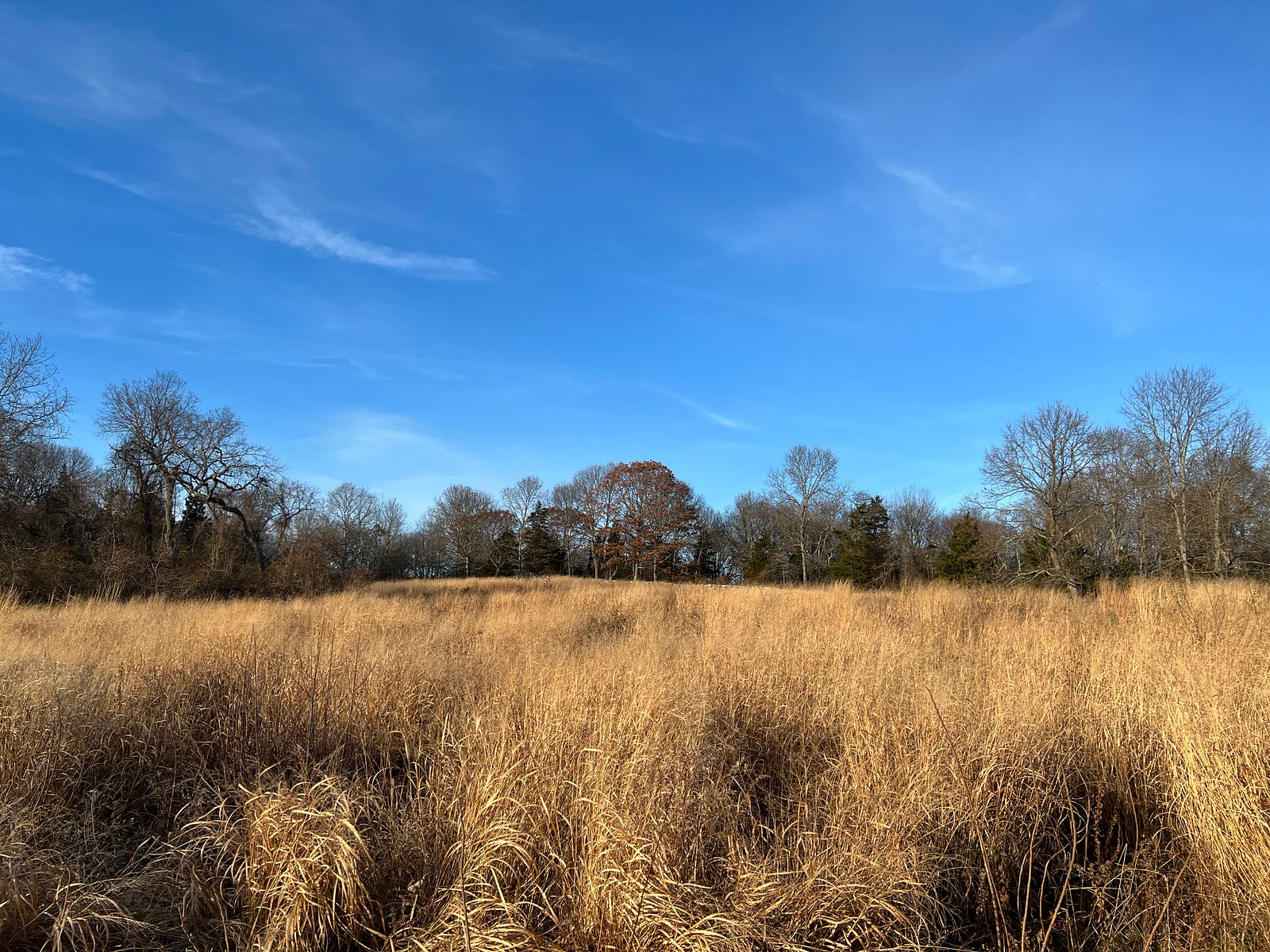
The remains of summer grasses in late fall at Haley Farm State Park, Groton, CT | Photo by Ronald Steed
That’s not that way for Christians who pay attention to this parable and to the Gospels. We don’t kill evil because God doesn’t kill it; we water and nurture it along with everything else, because God waters and nurtures the wheat and the darnel together. Christians leave it to God to sort out the causes of evil in God’s good time, and that includes the evil in our own hearts. We try to wait patiently on God, because only God really knows what is good and what is evil, and God will act on it when God is ready.
We don’t kill evil because we would kill some of the good as well. We don’t kill it because we’re not very good at telling the difference between good and evil. We don’t kill it because every human heart, our own included, is a mix of wheat and darnel and to kill a part of the heart is to kill the whole thing.
We don’t kill the evil because we believe there is more going on in this wheat field than just cultivation; there’s also transformation. Darnel is getting changed into wheat, and that line that runs through every human heart can be moved to make more and more room for wheat, and less and less room for darnel. The work of God’s creation has never stopped, and every moment is a moment when something new can happen that has never happened before. And, we are co-creators in the Trinity’s work.
A Life Lived Among Wheat and Darnel
Jesus lived his life exactly they way he is telling us to live with this wheat field. He didn’t kill the Pharisees or the Herodians. He didn’t raise an army to destroy the Romans, even though that’s what everybody thought he was supposed to do. Instead, he lived among the wheat and the darnel, and he healed, he transformed, he nurtured, and he watered. He criticized the powerful who seemed to be scattering darnel seed all over the place, he worked some justice to tamp down the evil where it had became too powerful, and he turned over a few tables to remind evil who was in charge. And… he went to the cross. Evil is real, and sometimes the cross is what happens in fields of wheat and darnel.
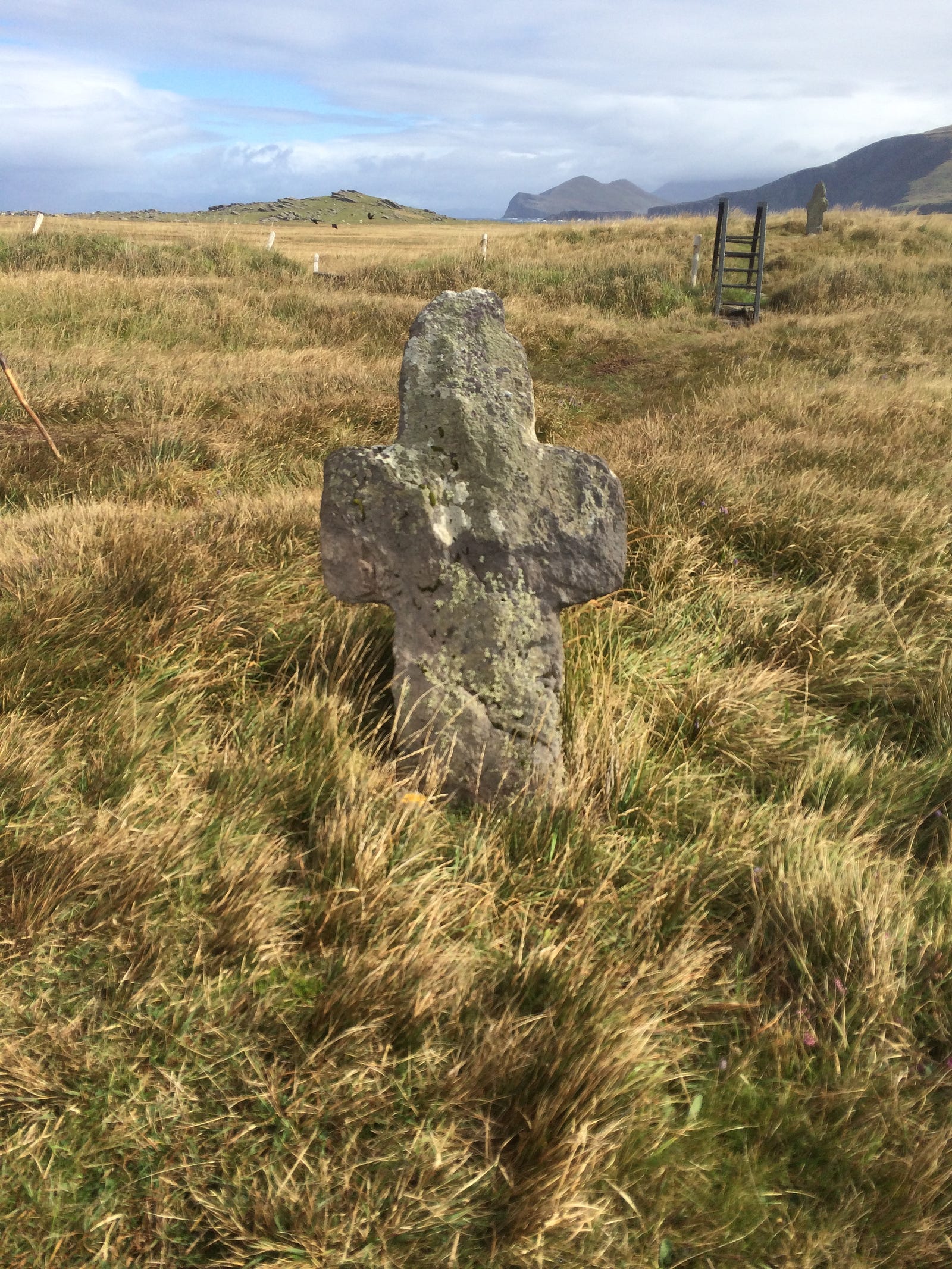
Standing Stone Cross at St Brendan’s Well, Coarha Beg, Island of Valentia, Ireland | Photo by Ronald Steed
Darnel and wheat; cross and resurrection. Its not violence that is redemptive, it is the cross and the resurrection that are redemptive. The wheat fields of our lives, just like Jesus’, includes both of these. Where the darnel is thick, there is the cross. Where the wheat flourishes, there is resurrection. We live in a field that has both, so we’re going to encounter cross and resurrection all the time.
When we exchange the peace here in a few minutes, I want you to imagine you are greeting ones whose hearts are beautiful green fields of young sun-drenched wheat and darnel, fluttered in waves by the gentle summer breeze under a clear blue sky; ones whose fields of rippling grain are deeply woven into your own.
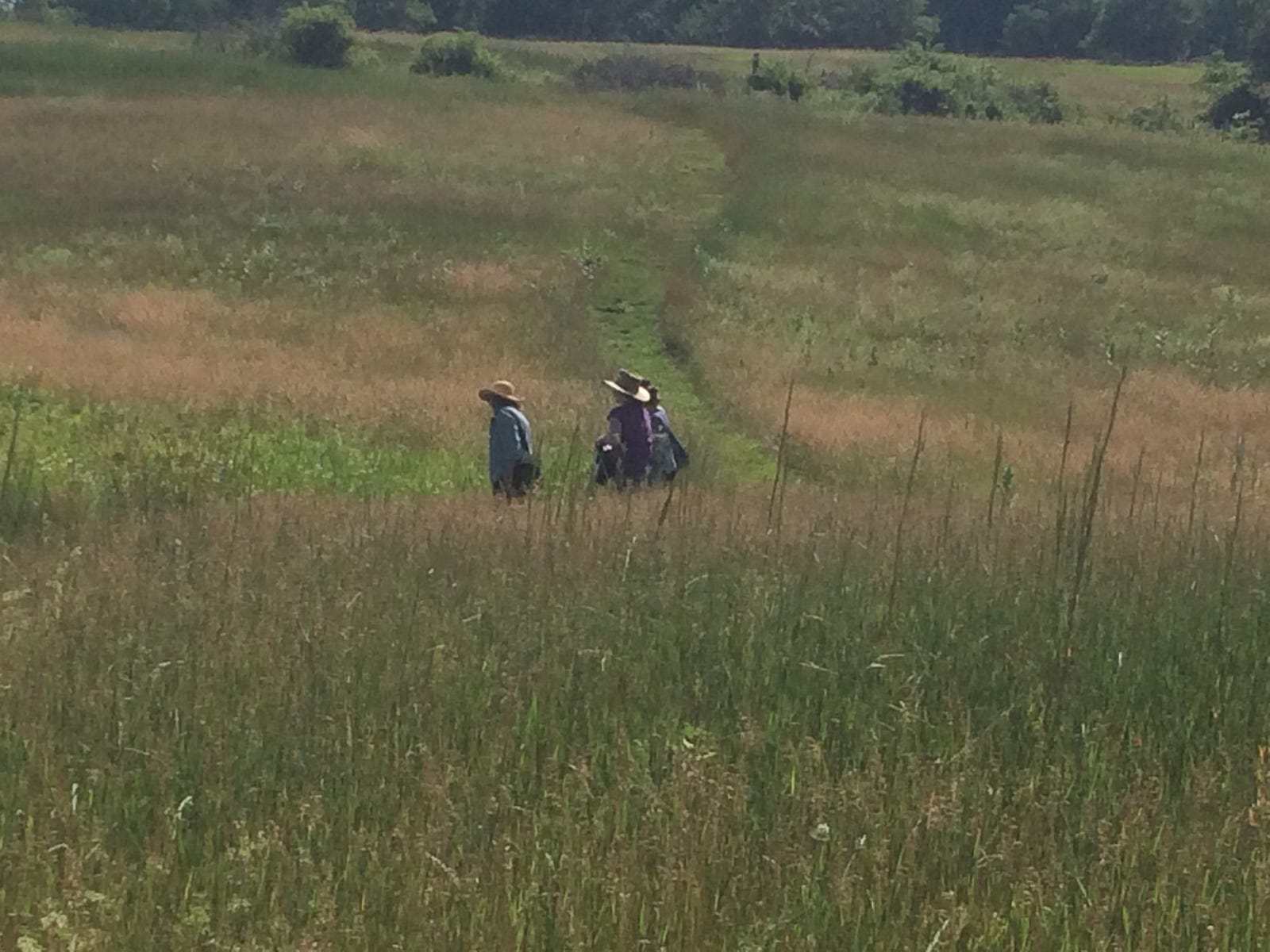
God’s Good Road passes through many such fields | Photo by Ronald Steed at the Connecticut Audubon Center, Pomfret, CT
God’s good road… the road where God traces our journeys and our resting-places, wanders through many such fields. And, the Peace of God that passes all understanding includes both the darnel and the wheat, the cross and the resurrection. May we nurture and water these fields together, and wait patiently until God is ready to sort them all out.
…
¹ This sermon was delivered at St. Andrews Episcopal Church, Madison, CT, in Ordinary Time, Proper 11 (year A), July 22, 2023
² Matthew 13:24–30, 36–43 (NRSV):
Another parable Jesus put before the crowds: "The kingdom of heaven may be compared to someone who sowed good seed in his field; but while everybody was asleep, an enemy came and sowed weeds among the wheat, and then went away. So when the plants came up and bore grain, then the weeds appeared as well.
And the slaves of the householder came and said to him, ‘Master, did you not sow good seed in your field? Where, then, did these weeds come from?’ He answered, ‘An enemy has done this.’ The slaves said to him, ‘Then do you want us to go and gather them?’ But he replied, ‘No; for in gathering the weeds you would uproot the wheat along with them. Let both of them grow together until the harvest; and at harvest time I will tell the reapers, Collect the weeds first and bind them in bundles to be burned, but gather the wheat into my barn.’"
Then he left the crowds and went into the house. And his disciples approached him, saying, "Explain to us the parable of the weeds of the field." He answered, "The one who sows the good seed is the Son of Man; the field is the world, and the good seed are the children of the kingdom; the weeds are the children of the evil one, and the enemy who sowed them is the devil; the harvest is the end of the age, and the reapers are angels. Just as the weeds are collected and burned up with fire, so will it be at the end of the age. The Son of Man will send his angels, and they will collect out of his kingdom all causes of sin and all evildoers, and they will throw them into the furnace of fire, where there will be weeping and gnashing of teeth. Then the righteous will shine like the sun in the kingdom of their Father. Let anyone with ears listen!"
³ From The Gulag Archipelago 1918–1956 (1973) by Aleksandr Solzhenitsyn
The Rev. Ron Steed is an Episcopal Deacon in Southeast Connecticut and has served the New London Homeless Hospitality Center in a variety of ways. He writes haiku and lyrical prose that he hopes will help others put the head and heart in right-relation.
Medium Top writer in: Art, Watercolor, Haiku, Sermons, Refresh the Soul Weekly, and Episcopal Church.
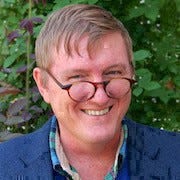
Ron Steed